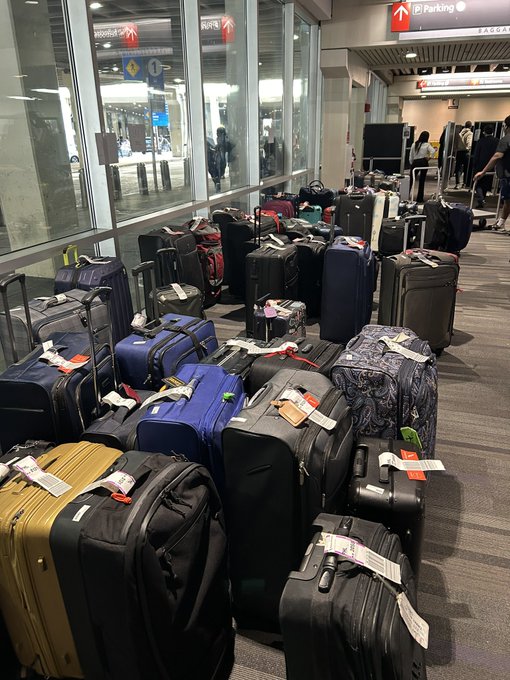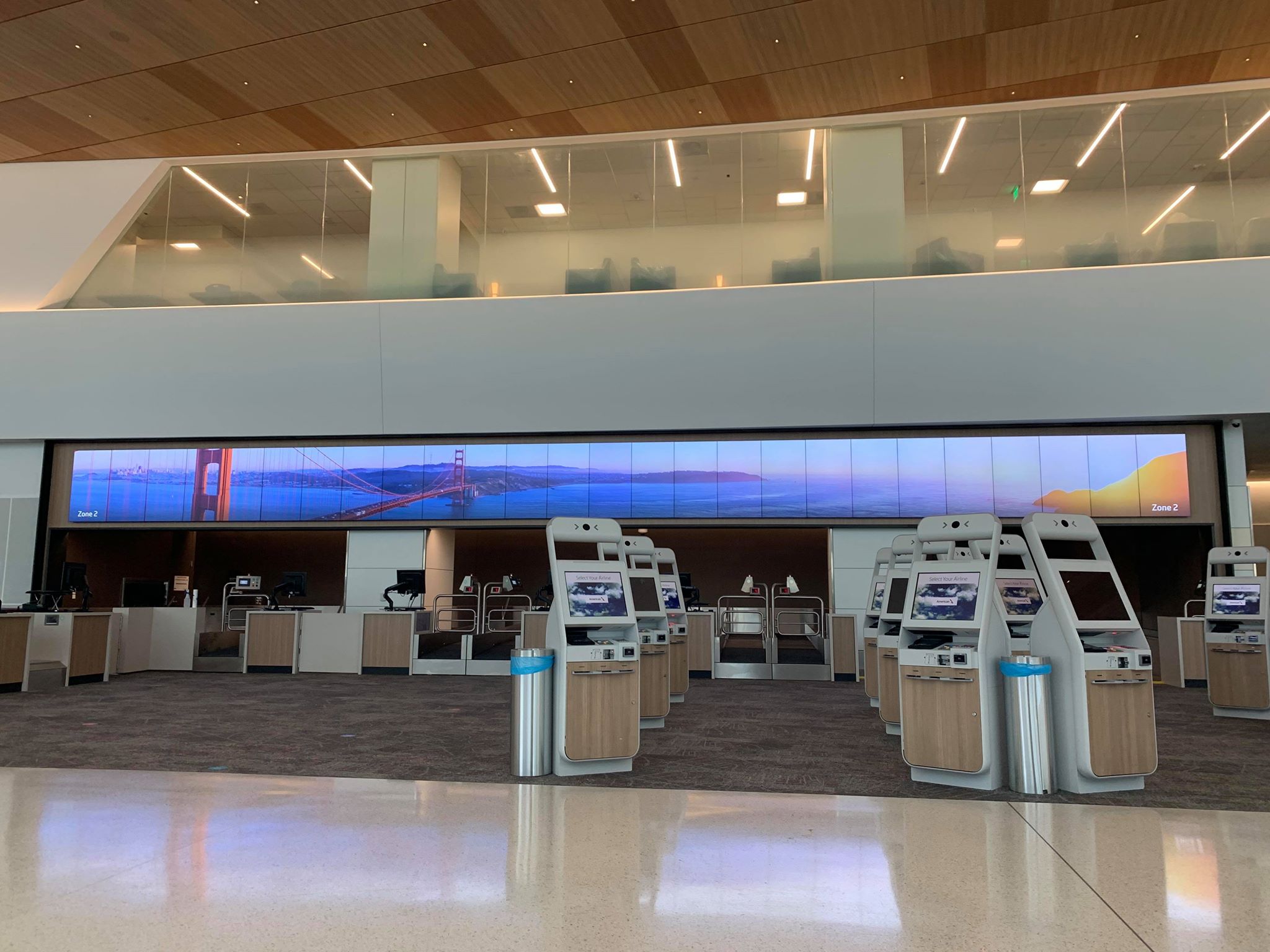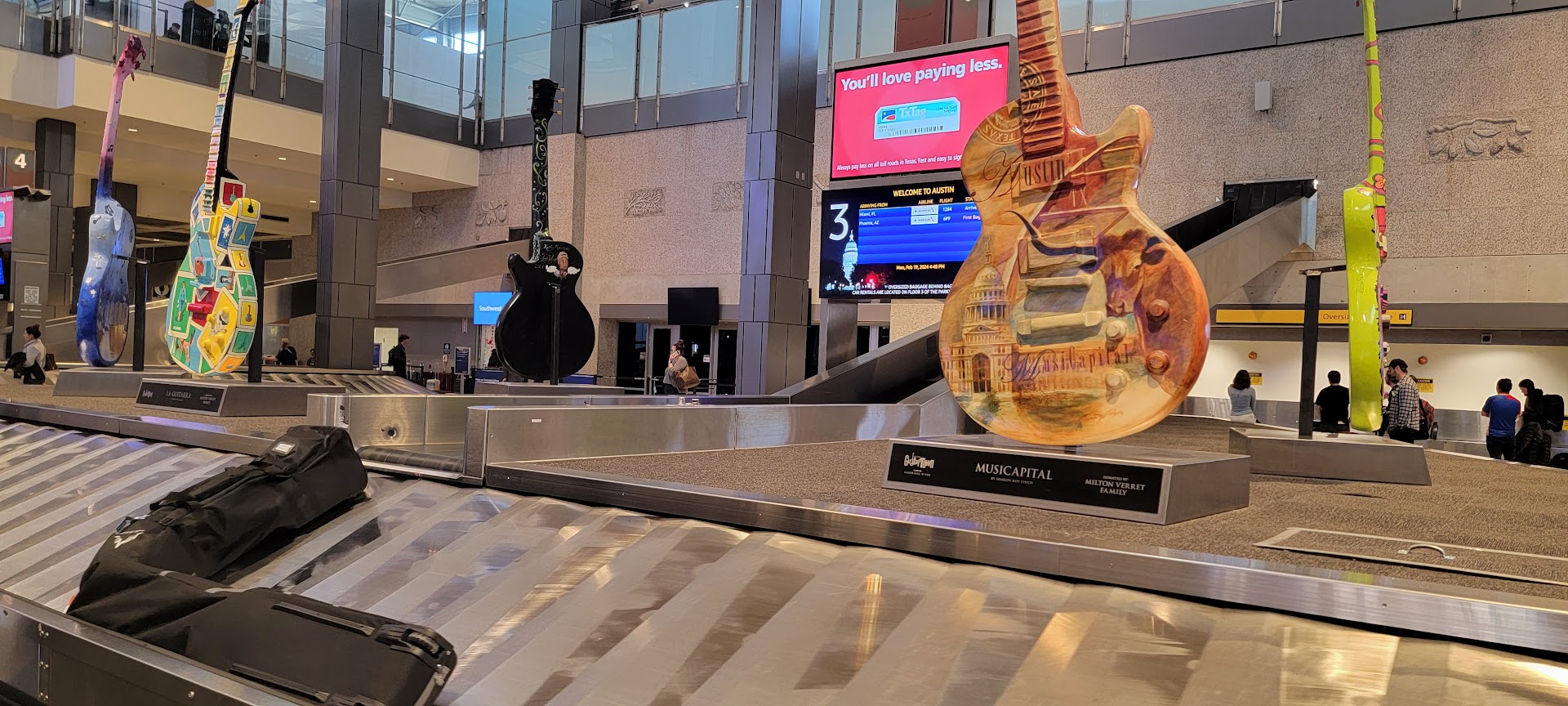American Airlines has changed how customers prepay for checked bags. They’ve stopped pooling checked bags across all travelers on a reservation and now force each bag to be explicitly assigned (and charged) to the passenger who will check it.
In other words, if someone in the group is checking three bags, they pay first‐bag, second‐bag, and third‐bag fees for themselves rather than splitting everything evenly among the traveling party.

You still want to spread out bags across passengers, rather than assigning each bag to the traveler to whom the bag ‘belongs’. That’s because first checked bag fees are lower than second checked bag fees – so you want to use each passenger’s first bag before assigning anyone a second.
I suspect that with this change, some passengers will assign two bags to a single passenger rather than two first bags to each. And that’ll mean more bag fee revenue to American. However, they explain this change as meeting requirements for ‘positive passenger bag match’.


Positive Passenger/Bag Matching (“PPBM”) was common in Europe before the United States, and it expanded on both sides of the Pond following the the bombing of Pan Am flight 103. It means that the passenger and their bag has to travel on the same flight. If a passenger offloads from the aircraft, the baggage has to be removed also.
The idea there is that for security reasons you don’t want a passenger putting something on the aircraft (a checked bag) without tying their own life to its contents. That doesn’t help against a suicide bomber but before 9/11 the expectation was that terrorists didn’t want to lose their own life in the process (and it’s not clear that all of the 9/11 hijackers realized that was the plan either).
However “positive bag matching” is generally not done on U.S. domestic flights anymore because the bags themselves are now being screened. Positive bag matching is required under 49 USC § 44901(e)(1) as one of four methods of compliance where baggage isn’t electronically screened.
- Passenger and bag can be required to travel together
- Bags can also be manually searched
- Or searched “by canine explosives detection units in combination with other means”
- Or baggage security can be handled through “other means or technology approved by the [TSA] Administrator.”

Passengers and their bags are separated all the time even where positive bag matching is in place. For instance an airline may fail to load baggage onto a connecting flight. The passenger continues their journey, while the bags follow later. That’s considered acceptable because it’s not the passenger who redirected the bags, in fact the passenger intended to fly with their bags.

Making sure passengers and bags travel together was considered a second best, replaced on domestic flights by screening of bags themselves.


This has been a thing with AA for years. I’ve experienced this in 2018.
“American Airlines has changed how customers prepay for checked bags. They’ve stopped pooling checked bags across all travelers on a reservation and now force each bag to be explicitly assigned (and charged) to the passenger who will check it.”
I presume those with AAdvantage credit cards with free checked bags for ____ people on the same reservation will STILL get free checked bags…
@Jason – correct
Huh? Correct me if I’m wrong, but this seems like an issue only for complete morons who can’t divide their checked baggage among their family members Right?
Easy way to beat the system here…
1. Divvy up ownership of the bags BEFORE you arrive at the counter..
Picard
The implication in this article is that on international flights baggage is not screened. Is that true?
This is pretty much how every other airline does it anyway. The old AA way was frustrating when you had multiple pax and wanted attribution. It would assign first bag across the record which may not be what’s happening. Now you’re going through customs at your final destination with 2 bags, but your second bag was checked as your companion.
@Jean luc Picard — Make it so!
The bags seem to have had issues for some time. Back in the early ’00s you had to physically answer questions at check-in about having control of your bag, whether anyone put something in, etc. This went on for years and was pretty good theater, but I doubt if it did anything else. I finally wrote the Secretary of Transportation (Mineta) and pointed out that if you were on a cruise ship you typically did not have control of your luggage before disembarking. “So everybody lies,” I said and noted that 2000 people answering truthfully would stop the entire system. He actually read it and replied without giving a clear answer though sometime later the policy ended. Finding that balance between keeping the system going and being (supposedly) safe enough is not easy.
Since the relevant international conventions on air travel cap airline liability by passenger, for such covered trips — even the domestic parts on separately booked tickets — it’s long been best practice on a multi-passenger reservation to try to get the airlines to tag one bag per passenger named on the checked bag tag & associated claim check.
Checked-in international bags flying from US airports are screened by TSA/TSA-approved contractors in the same way as for domestic flights.
For international flights on many routes originating outside of the US, checked-in luggage’s primary or sole security measure was positive passenger bag matching. But more and more countries/airports/airlines have supplemented that practice with other measures.
I didn’t even know this was possible with American.
I’ve always split the luggage evenly cause that’s how it works with other airlines.
I assumed AA was the same.
Having spent 5 days in airport limbo with American due to their distinctly unfriendly to passenger policies, them gouging more money out of we airline captive victims doesn’t surprise me. They lied to us several times and made up stories for delays, cancellations and gate changes. After $1500 in out of pocket expenese due to their negligence in honoring the tickets we paid for they offered us $100 in flight vouchers! We’ll never fly them again and would discourage anyone else to!
Having designed and led the build of the revised WCI (which introduced ancillary fees) for US Air, before they acquired American, I can say with 95% certainty, this is an attempt to capture revenue from pax that aren’t paying attention.
I agree with Chopsticks…
Only a moron would have a problem with the inability to divide bags among the group.
As usual the author- who hates American, makes a molehill into a mountain